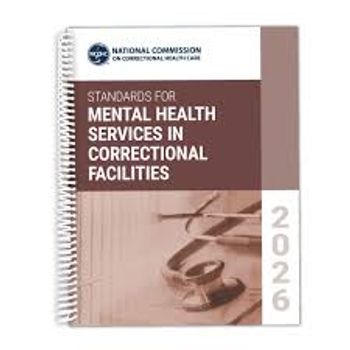
- Psychiatric Times Vol 30 No 4
- Volume 30
- Issue 4
Assessing Violence Risk: A Meteorological Analogy
Both clinicians and weather forecasters employ the same general process of information gathering, analysis, and reaching a conclusion.
Clinical and actuarial violence risk assessment has been analogized to weather forecasting.1,2 The weather forecast model can be applied to both violence and suicide risk assessment. Neither violence nor weather can be predicted with 100% accuracy as can be done with eclipses and other astronomical events. Actuarial predictions, similar to weather forecasts, are made within certain probabilities. Both short-term and long-term weather predictions are probability determinations beyond the immediate present (eg, 24 to 48 hours, 7 to 10 days). In contrast, clinical risk assessments are here and now determinations, much like sticking one’s head out the window to check current weather conditions. However, time erodes clinical assessments.
Both clinicians and weather forecasters employ the same general process of information gathering, analysis, and reaching a conclusion. Clinicians can assess level of risk but cannot predict reliably who will or will not become violent or attempt or complete suicide. Weather forecasters make probability predictions, using sophisticated weather instruments and computer models. Meteorology has achieved a high level of predictive accuracy. However, weather often changes rapidly, undermining prediction.
Some psychiatrists opine that clinical assessments can predict violence in the short term. For example, Tardiff,3 in discussing clinical violence assessment, defines short-term as “within days or a week.” Fawcett and colleagues,4 in a 10-year prospective study of 954 patients with major affective disorders, identified acute, short-term indicators of suicide risk that were statistically significant within 1 year of assessment.
There are, however, no evidence-based short-term, or “imminent,” risk factors for the assessment of violence or suicide.5 The frequently used and misused term “imminent violence,” often found in clinical usage and in legal or statutory language, is a prediction of violence that masquerades as a real-time assessment. Clinical assessment, similar to weather forecasting, is a process that requires frequent updating.
The difference between clinical and actuarial assessment is illustrated by a seemingly trivial event. I was waiting in a hotel lobby with other speakers for transportation to a symposium on violence assessment and prediction. One of the speakers, a nationally and internationally recognized expert on the actuarial assessment of violence, decided to step outside to see whether he should wear a coat. After walking around in a circle a few times, he came back into the lobby and announced that a coat was unnecessary. I was immediately struck by the similarity of the actuarial expert’s here and now assessment of the current weather to the clinical approach of the assessment of violence.
Other similarities exist between clinical assessment and weather forecasting. Microclimates exist that are analogous to the assessment of uniquely individual violence risk factors that must be considered. Geographical weather predictions, for example, in oceanic or mountain climates, are analogous to cultural differences that need to be factored into violence assessments. Then there is the analogy between clinical crises and storms that must be assessed to guide appropriate actions. Both weather forecasters and clinicians must stay tuned to their respective instruments.
Assessing the unpredictable
Table
Differences between clinical and actuarial violence risk assessment
Clinical and actuarial assessments serve different purposes (Table). Actuarial assessments attempt to predict reasonably accurate, long-term violence risk probabilities for specific populations. Courts rely on actuarial assessments of “dangerousness,” a vague legal term, when regarding potentially violent individuals (eg, those released from prison or a forensic psychiatric facility or those in civil commitment procedures). Actuarial risk assessment produces statistically superior accuracy compared with the pre-1990s prediction models because of reliance on stable historical and demographic factors.2
In contrast, clinical assessment is an on the spot determination of a patient’s risk and protective factors that informs treatment and safety management. Clinical risk assessment is a process, whereas actuarial assessment of violence is an event. Actuarial instruments are insensitive to patients’ clinical changes in response to treatment interventions or to patients with clinical characteristics that fall outside of the scope of actuarial assessment. In contrast, the clinician must make continuing risk assessments of potentially violent individuals, often over several days to a week or more.6,7 Nonetheless, actuarial prediction studies can help clinicians identify evidence-based violence risk factors. For example, the Historical Clinical Risk Management-20 actuarial assessment instrument contains evidence-based risk factors that can be applied to the clinician’s real-time assessment of violence risk.8 However, few clinicians routinely employ structured instruments in their assessment of violence risk.9,10
Clinical risk assessment is analogous to a current weather forecast, actuarial risk assessment is analogous to long-term forecast (eg, tomorrow and beyond). However, the analogy of violence risk assessment to weather forecasting, like most analogies, is imperfect. Meteorologists make predictions about the weather with reasonable accuracy, but they cannot change it. Mental health professionals cannot predict who will or will not commit violence, but they can reduce or eliminate their patients’ risk of violence through clinical interventions. Moreover, the clinical assessment of violence or suicide risk must consider protective factors that diminish risk. Nonetheless, the analogy between weather forecasting and the assessment of violence is useful in illustrating the similarities and dif-ference between clinical and actuarial assessment.
Key points
• Actuarial assessment of violence risk is useful in decision making regarding violent individuals in specific situations (eg, release from prison or a forensic facility or in civil commitment)
• Actuarial assessments tend to be events, whereas the clinical assessment of violence is a process
• Clinical assessment of violence is a here and now determination that time begins eroding immediately; thus, patients at risk for violence require frequent assessment
• Actuarial assessment instruments contain evidence-based violence-risk factors that can be applied to the clinical assessment of violence
• Most clinicians do not find actuarial assessment instruments useful in assessing and treating violent patients; time consumption and lack of training in their use are other reasons
References:
1. Simon RI. Clinical Psychiatry and the Law. 2nd ed. Washington, DC: American Psychiatric Press; 1992.
2. Monahan J, Steadman HJ. Violent storms and violent people: how meteorology can inform risk communication in mental health law. Am Psychol. 1996;51:931-938.
3. Tardiff K. Clinical risk assessment of violence. In: Simon RI, Tardiff K, eds. Textbook of Violence Assessment and Management. Arlington, VA: American Psychiatric Publishing, Inc; 2008.
4. Fawcett J, Scheftner WA, Fogg L, et al. Time-related predictors of suicide in major affective disorder. Am J Psychiatry. 1990;147:1189-1194.
5. Simon RI. The myth of “imminent” violence in psychiatry and the law. Univ Cincinnati Law Rev. 2006; 75:631-643.
6. Tardiff K. The past as prologue: assessment of future violence in individuals with a history of past violence. In: Simon RI, Shuman DW, eds. Retrospective Assessment of Mental States in Litigation: Predicting the Past. Washington, DC: American Psychiatric Publishing; 2002.
7. Norko MA, Baranoski MV. The state of contemporary risk assessment research. Can J Psychiatry. 2005;50:18-26.
8. Dvoskin JA, Heilbrun K. Risk assessment and release decision-making: toward resolving the great debate. J Am Acad Psychiatry Law. 2001;29:6-10.
9. Monahan J. Structured risk assessment of violence in clinical risk assessment of violence. In: Simon RI, Tardiff K, eds. Textbook of Violence Assessment and Management. Arlington, VA: American Psychiatric Publishing, Inc; 2008.
10. Zimmerman M, McGlinchey JB. Why don't psychiatrists use scales to measure outcome when treating depressed patients? J Clin Psychiatry. 2008;69:1916-1919.
Articles in this issue
over 12 years ago
Shared Decision Making in the Treatment of Psychosisover 12 years ago
Treating Comorbid Psychiatric and Substance Use Disordersover 12 years ago
Five Key Fantasies Embraced by DSMover 12 years ago
Lamotrigine for Major Depressive Disorder Is Inappropriateover 12 years ago
Letter to a Foreign Psychiatristover 12 years ago
Psychosocial Assessment and Treatment of Bariatric Patientsover 12 years ago
Antidepressants and PregnancyNewsletter
Receive trusted psychiatric news, expert analysis, and clinical insights — subscribe today to support your practice and your patients.














